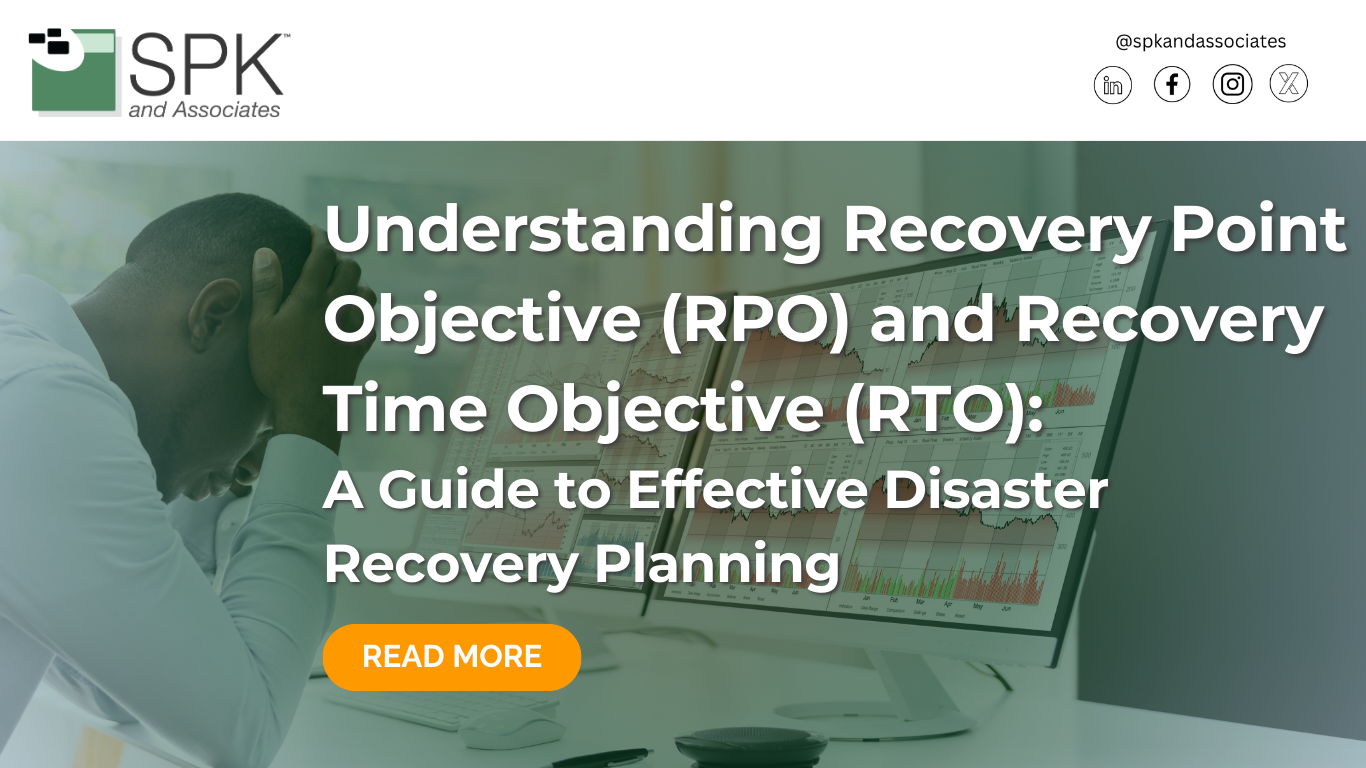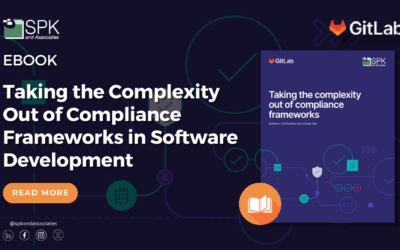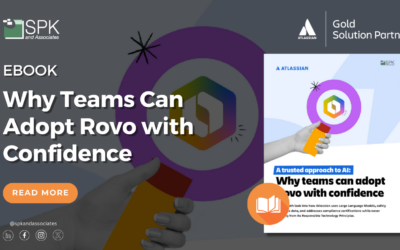Businesses are becoming more reliant on technology than ever before, meaning that disruptions such as system failures, data breaches, or natural disasters are more impactful to operations. Additionally, these can lead to a loss of revenue and customer trust. Disaster recovery planning, which includes Recovery Point Objective (RPO) and Recovery Time Objective (RTO) plays a pivotal role in mitigating these risks. At SPK, we work closely with clients to ensure that they have enacted the proper infrastructure to maintain success in the face of unexpected events. In this blog, we’ll dive into the importance of RPO and RTO in disaster recovery planning.
What Are RPO and RTO?
Starting with the basics, RPO and RTO are key metrics in disaster recovery planning that serve different purposes.
- Recovery Point Objective (RPO): the maximum amount of data that can be lost in the event of a disaster, expressed as a time interval. For example, if you set your RPO at 4 hours, your backup system must ensure that you don’t lose more than 4 hours of data in the event of a system failure.
- Recovery Time Objective (RTO): the maximum amount of time your business can tolerate being down before you need to restore services. For example, if your RTO is 6 hours, you need to have your systems up and running within 6 hours of a disaster to avoid an inescapable impact on business operations.
Determining RPO and RTO with Infrastructure and Services
Understanding RPO and RTO is critical to considering disaster recovery solutions because they directly influence the design, cost, and complexity of the required infrastructure. At SPK, we use these metrics to assess your specific needs and create a customized disaster recovery plan.
Infrastructure Availability and Performance
Our experts must determine your business needs based on availability and cost. Highly available environments are necessary for businesses with low RPO and RTO requirements. These are organizations that cannot afford to lose more than a few minutes of data, therefore needing their services to be restored almost immediately after an outage. Due to these needs, they must be provided with an infrastructure that supports near-real-time replication of data and quick failover mechanisms. This often involves the use of cloud-based services, data centers, and automated failover systems, which can be more expensive due to the complexity of the setup.
On the other hand, if a business has a higher RPO and RTO threshold it can tolerate longer downtimes and data loss. These businesses can operate with less expensive, less complex systems. Traditional backup methods such as daily snapshots or scheduled backups may work just fine for these businesses, reducing infrastructure costs while still offering adequate protection.
Service Levels Based on RPO/RTO
Our experts must also determine service requirements based on RPO and RTO. These can vary significantly based on factors such as company size or industry. A client with a critical e-commerce platform for example may require a zero-downtime solution with data replication across multiple regions. A small business with less critical operations on the other hand may be able to tolerate a day’s worth of data loss or downtime. By clearly understanding these objectives, we help clients effectively allocate resources, ensuring that their infrastructure and services are aligned with their business needs.
How We Qualify Client Needs Using RPO and RTO
One of the first steps we take when discussing disaster recovery plans with clients is to ensure we understand their RPO and RTO requirements. These metrics provide a foundation for us to tailor solutions that meet their business needs and budget. Here’s how we utilize RPO and RTO to guide the consultation process.
Business Impacts and Needs
We first discover the business impact of a client losing access to each of their systems and data. Asking about this helps us identify the most critical services and applications to prioritize in their disaster recovery plan. Some services may require near-zero RPO and RTO, while others may tolerate longer recovery times.
After understanding the client’s RPO and RTO needs, we assess whether they require a highly available infrastructure. Highly available RPO and RTO clients will likely need more costly capabilities. We ensure our clients that while high availability service is achievable, it is often more expensive due to the increased infrastructure requirements. On the other hand, clients with less critical needs may prefer more affordable disaster recovery solutions. We ensure these clients that while this is a cheaper option, they will likely have slower recovery times.
Resolving Issues and Designing a Disaster Recovery Plan
Once we understand the client’s goals based on RPO and RTO targets, we evaluate their current infrastructure to identify any gaps. For example, if a company has an RPO of 2 hours but only backs up data once every 24 hours, they are at risk of losing significant amounts of data in the event of a disaster. Similarly, if their systems take 12 hours to recover but they need them back online within 4 hours, adjustments will need to be made to improve recovery times. Our experts ensure these issues get resolved. Finally, once current issues are mitigated, our experts create a disaster recovery plan that aligns with the client’s business needs and budget.
Understanding the Costs of Disaster Recovery
When designing a disaster recovery plan, our consultants ensure clients understand the cost-benefit analysis of different disaster recovery solutions. We want to implement the best option for your business needs, so this conversation is vital. We inform all of our clients that the investment in a robust disaster recovery plan often outweighs the potential losses from downtime, data loss, and service disruption. However, for clients with less critical needs, more cost-effective solutions like periodic backups and scheduled restores may suffice.
Implementing a Disaster Recovery Plan
At SPK, we recognize that effective disaster recovery planning is not a one-size-fits-all solution. By focusing on your unique RPO and RTO needs, we can determine the disaster recovery solution for your unique business needs. Let us help you build a resilient infrastructure that aligns with your needs, contact our experts today.










